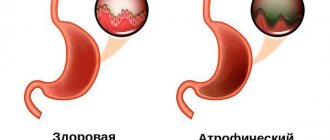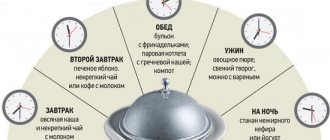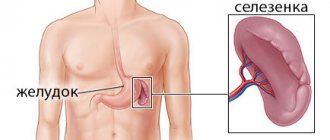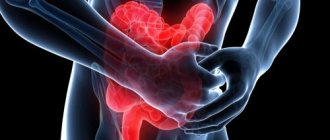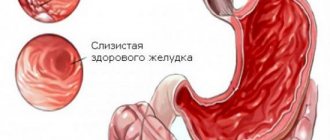The diagnosis of hemorrhagic gastritis, as well as chronic inflammation of the gastric mucosa, requires morphological confirmation.
If acute gastritis of any etiology almost always has a hemorrhagic component, then for chronic forms of the disease it is not characteristic and accompanies only erosive gastritis. First, let's understand the basic concept and find out what hemorrhages are.
Hemorrhagic gastritis - what is it?
Hemorrhagic gastritis is a type of inflammatory process in the gastric mucosa. Its peculiarity is that it is not inflammation that primarily occurs, but vascular microcirculatory disorders in the submucosal layer. Their result is hemorrhage and hemorrhagic (bloody) penetration of the mucous membrane, or the formation of blood clots in the smallest vessels of the stomach. The result of the described processes is inflammation of the mucosa with its leukocyte infiltration at the microscopic level and the formation of small surface defects (erosions), which are determined visually.
Therefore, hemorrhagic gastritis is often called erosive or erosive-hemorrhagic. This is not always correct, since not every hemorrhagic gastritis can become erosive. Both of these options can be independent forms of the disease.
Clinical picture
The manifestations of hemorrhagic gastritis coincide with other types of gastritis, but have several additional signs that are unique to it. All symptoms of gastritis are divided into two categories - local and general. Local - only processes occurring in the affected part, in the stomach. General - appearing throughout the body. The body reacts sharply to a failure in any organ and tries with all its might to send a signal that not everything is okay with it.
Symptoms of hemorrhagic gastritis:
- heaviness;
- nausea;
- heartburn;
- general weakness of the body;
- fast fatiguability;
- increased irritability;
- pallor;
- sweating;
- drowsiness;
- intestinal disorder;
- stomach bleeding;
- vomiting (looks like coffee grounds);
- dizziness;
- cardiopalmus.
Symptoms of hemorrhagic gastritis
In terms of clinical manifestations, hemorrhagic gastritis cannot be classified as a disease with specific symptoms. Its main symptoms are characteristic of almost all types of gastritis and gastric ulcer. But there are also specific symptoms on the basis of which hemorrhagic gastritis may be suspected.
Symptoms of hemorrhagic gastritis are presented in table form.
| Complaints |
|
| Inspection data |
|
| Diagnostic data |
|
Diagnostics
The diagnosis of hemorrhagic gastritis is made only after a series of studies and tests to confirm the presence of the disease. Thanks to the following actions, you can confidently say about the type of gastritis, assess the condition of the diseased organ, impaired functions and the degree of damage to the stomach.
The diagnosis of hemorrhagic gastritis is made only after a series of studies and tests to confirm the presence of the disease.
Clinical diagnosis. The very first study conducted with the patient. It includes the collection of information and analysis of the patient’s complaints, examination data, and the patient’s condition. On these grounds a preliminary diagnosis is made. The most important thing is that at this stage a further plan for diagnosis and treatment is drawn up.- Endoscopic diagnosis (gastroscopy) and biopsy. Gastroscopy is performed using a special flexible tube, inside of which there is a fiber optic system (gastroscope). It is administered through the mouth and esophagus. The condition of the stomach is observed. During a biopsy, cells and tissues are collected to accurately determine the cellular composition of the entire stomach.
- Laboratory diagnostics. This type of study includes a general and biochemical blood test, a clinical analysis of urine and feces, as well as a fecal test to determine occult blood. The presence of infection in the body is determined.
- Ultrasound of the liver, gallbladder and pancreas. In addition to gastritis, there may be concomitant diseases that require treatment.
- Electrogastroenterography. Behind this long, incomprehensible name lies a fairly simple definition. Let's take it in order. The motor-evacuation function of the stomach is the process of moving food through the digestive tract, processing, mixing with gastric juice. In fact, one of the most important functions of the gastric tract. Electrogastroenterography examines how much the stomach is able to work.
Acute hemorrhagic gastritis
If hemorrhagic gastritis occurs for the first time or is characterized by a lightning-fast course of its reoccurrence, it is considered to be acute. It is distinguished by relatively more vivid clinical symptoms of the inflammatory process. Signs of gastric bleeding are rare. The causes of acute hemorrhagic gastritis are the following factors:
- Poor quality food products. These can be either dishes spoiled during long-term storage, or products contaminated with toxic substances;
- Chemicals, industrial poisons, heavy metal salts. They can enter the stomach cavity either during handling or as a result of deliberate consumption. In this case, a chemical burn of the mucous membrane occurs, which subsequently turns into hemorrhagic or erosive gastritis;
- Excessive amount of alcohol consumed or its poor quality;
- Systemic connective tissue diseases and severe intoxication of the body against the background of any diseases leading to disruption of microcirculatory processes in the stomach;
- Closed blunt trauma to the abdomen, when a gastric contusion occurs, or diagnostic studies accompanied by damage to the mucous membrane.
- The occurrence of acute hemorrhagic gastritis under the influence of these factors suggests that this process has a very rapid onset and is not associated with a violation of secretory mechanisms. Its origin is associated with exposure to harmful environmental factors on the body. This feature determined its vivid clinical picture and manifestations, which are several times stronger than in the chronic course of the disease.
Classification
Pathology can be classified according to several criteria.
With the flow:
- spicy;
- chronic.
Due to the occurrence:
- the primary disease develops in healthy people;
- the secondary form is diagnosed in patients with previous gastric pathologies.
Based on localization, the disease is designated by the name of the section of the stomach in which hemorrhages are detected. This can be the body or the bottom of the organ; the antrum is most often affected.
Diet for hemorrhagic gastritis
Dietary recommendations and nutrition for hemorrhagic gastritis are one of the main methods of its prevention and occupy important positions in its treatment. In some cases of the disease, even compliance with them does not protect against repeated exacerbations of the process. But control of dietary rules within the framework of table No. 1 in the acute stage of the disease, and No. 5 when the inflammatory process subsides, is mandatory. They include:
- Excluded: spicy, fried, smoked dishes, spices, fatty and roughage foods, fresh bread and baked goods, citrus fruits, legumes, cucumbers and tomatoes;
- The emphasis should be on light liquid or semi-liquid dishes (soup, cream soup, puree, jelly) warm. Eating hot or too cold food is unacceptable;
- Dishes should be boiled or steamed;
- Allowed products: bran bread or white stale bread (crackers), buckwheat, rice, oatmeal, dietary meat (chicken, rabbit) and broths, steamed dishes based on them, omelettes and soft-boiled eggs, fermented milk products (yogurt, kefir, low-fat cottage cheese), boiled vegetables, fruit and berry compotes and fruit drinks;
- Number of meals. Organizing meals involves regularly taking 5-6 moderate portions at the same time. Overeating is unacceptable.
Details about the diet:
What can and cannot be eaten with gastritis?
Treatment with drugs
The patient must take a set of medications prescribed by the doctor. Various medications act on specific processes in the body.
The complex may include drugs to reduce the secretion of gastric acid. Such medications include Kvamatel, Omeprazole, Nolpaza, etc. Additionally, the patient must take substances that normalize the activity of the stomach. This could be Maalox, Almagel, etc. The doctor prescribes the patient various enzymes that help digest food and ease the work of the stomach: Mezim, Pancreatin. In the presence of bleeding erosions, hemostatic drugs are prescribed.
In addition, the body needs substances that strengthen the immune system. In this regard, it is recommended to take vitamins and various restoratives.
Subungual and cutaneous hemorrhages
There are two types of subungual hemorrhages. The first is characterized by the formation of spots under the nails of different sizes and different colors - from pink to bright red. Otherwise, this disease may be called oil stain syndrome. The second type is characterized by formations in the form of stripes of brown, red or black colors; This is how capillary rupture appears. Vitamin complexes, antibacterial ointments, calcium-containing creams, and lotions are prescribed as treatment.
Hemorrhages on the skin occur when hemorrhages under the skin or when red blood cells penetrate through the vascular walls into the skin tissue. They look like spots on the skin or pinpoint hemorrhages in the form of scatterings. They can change color and merge with each other. At first, as a rule, they are bright red, then change color to purple, blue, greenish, and then become brownish-yellow. Color changes are determined by changes in hemoglobin. Essentially, this is a hematoma. Treatment is usually not required; the spots disappear on their own after a while.
Hemorrhages of the eye
The cause is, as a rule, severe and prolonged fatigue caused by tension in the eye vessels when performing small, painstaking work. This phenomenon is usually painless, but it seems to the person as if multi-colored or dark figures are looming in front of him, transforming into each other, merging, diverging, constantly changing shape and making it difficult to see. As a preventive measure, doctors recommend consuming vitamin C, which helps soften the walls of the arteries. It is not recommended to bend over sharply; on the contrary, you need to try to rest more. There are many folk recipes against hemorrhages in the eye, and in not very severe cases they are quite effective. If eye hemorrhages are regular and extensive, then it is necessary to consult a specialist - an ophthalmologist. In addition, any head injury that leads to pain or bleeding in the eye area requires an immediate visit to the doctor.
Hemorrhages at the injection site
These are local bleedings that occur with intramuscular and subcutaneous injections. With intravenous injections, they can occur if a through vein is punctured. The severity of local hemorrhage depends on many factors: the drug administered, the width of the needle, and the skill of the physician performing the procedure.
The individual state of the body and the tendency of tissues to regenerate also have an impact. Intramuscular injections produce more severe hemorrhages than subcutaneous injections due to greater vascularization of muscle tissue. As a rule, after some time, the resulting blood stain disappears on its own, but in some individual cases, replacement therapy or taking water-soluble drugs may be prescribed.
Folk remedies
A folk remedy such as yarrow, which has an anti-inflammatory and hemostatic effect, is very helpful in treating gastritis.
This disease is treated quite effectively with folk remedies - using herbal decoctions and collections of medicinal plants.
A folk remedy such as yarrow, which has an anti-inflammatory and hemostatic effect, is very helpful in treating gastritis. A tablespoon of chopped dried herb is brewed in a glass of hot water. You need to drink a few tablespoons of the broth half an hour before meals.
The leaves of the aloe plant are a well-known anti-inflammatory folk remedy. The pulp needs to be crushed and a decoction made from it. Take the composition two teaspoons before meals, half an hour before.
Gastritis of the hemorrhagic type is well treated with such a natural substance as propolis. A small amount of propolis should be chewed thoroughly in the morning on an empty stomach. The substances contained in it have a positive effect on the functioning of the stomach and help restore the mucous membrane.
If you find signs of gastritis, do not delay its diagnosis and treatment. This will help you avoid serious stomach complications in the future. Do not neglect diet as an additional measure to treat the disease.
Expulsive hemorrhage
A rather rare and serious complication that occurs after surgery on the eyeball for cataracts and other diseases. It may begin at the time of surgery, but usually develops in the early stages of the postoperative period. With this type of hemorrhage, damage to the posterior ciliary arteries occurs. It is believed that hypertension, atherosclerosis, and ocular hypertension are predisposing factors to this type of hemorrhage. Therefore, when preparing a patient for surgery, such data should be taken into account. Accompanied by nausea, vomiting, severe pain in the eye and head. In especially severe cases, it is possible that the contents of the eye are pushed out of the wound by blood pressure. As countermeasures, blood evacuation through a scleral incision is used. It is also necessary to close the wound as quickly and tightly as possible after surgery.


